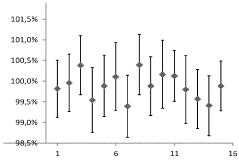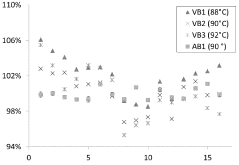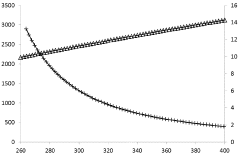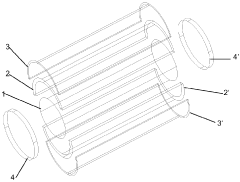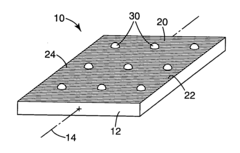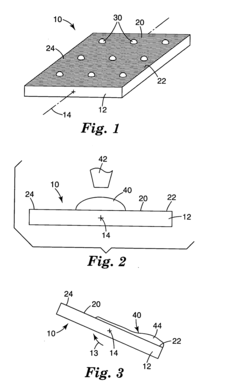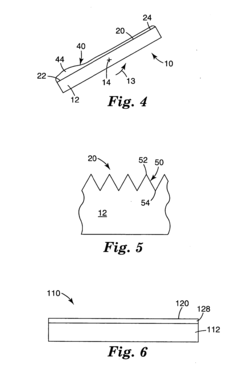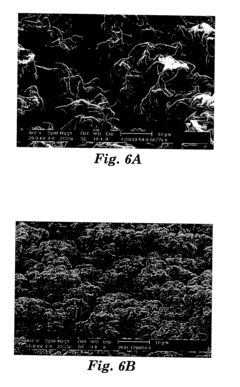Accura 25: Pioneering Low-Volume Manufacturing Techniques
JUL 8, 20259 MIN READ
Generate Your Research Report Instantly with AI Agent
Patsnap Eureka helps you evaluate technical feasibility & market potential.
Accura 25 Background and Objectives
Accura 25, developed by 3D Systems, represents a significant milestone in the evolution of low-volume manufacturing techniques. This innovative material has emerged as a game-changer in the field of stereolithography (SLA), a pioneering additive manufacturing process. The development of Accura 25 is rooted in the growing demand for rapid prototyping and small-scale production solutions that offer high precision and durability.
The primary objective behind the creation of Accura 25 was to address the limitations of traditional manufacturing methods in producing small batches of complex parts. As industries increasingly require customized components and rapid iteration cycles, the need for a material that could deliver both accuracy and strength became paramount. Accura 25 aims to bridge the gap between prototype aesthetics and functional end-use parts, offering a versatile solution for various applications.
The technology's evolution can be traced back to the early days of 3D printing, where materials often lacked the mechanical properties necessary for functional testing. Accura 25 represents a leap forward in this regard, combining the high-resolution capabilities of SLA with enhanced material properties that closely mimic those of injection-molded plastics.
One of the key technological goals of Accura 25 is to enable the production of parts with intricate geometries that would be challenging or impossible to achieve through traditional manufacturing methods. This includes the creation of complex internal structures, thin walls, and fine details that are crucial in industries such as aerospace, automotive, and medical device manufacturing.
Another significant objective is to reduce the time-to-market for new products by enabling rapid design iterations and functional prototyping. Accura 25 allows engineers and designers to quickly produce and test multiple versions of a part, accelerating the development process and potentially reducing overall production costs.
The material also aims to expand the application scope of 3D printing in low-volume manufacturing. By offering properties similar to those of engineering plastics, Accura 25 opens up possibilities for producing end-use parts directly, eliminating the need for tooling in certain scenarios. This capability is particularly valuable in industries where customization and small production runs are common.
As the manufacturing landscape continues to evolve towards more agile and responsive production methods, Accura 25 stands at the forefront of materials enabling this transition. Its development reflects a broader trend in the industry towards materials that can meet the demanding requirements of both prototyping and end-use applications, paving the way for more flexible and efficient manufacturing processes.
The primary objective behind the creation of Accura 25 was to address the limitations of traditional manufacturing methods in producing small batches of complex parts. As industries increasingly require customized components and rapid iteration cycles, the need for a material that could deliver both accuracy and strength became paramount. Accura 25 aims to bridge the gap between prototype aesthetics and functional end-use parts, offering a versatile solution for various applications.
The technology's evolution can be traced back to the early days of 3D printing, where materials often lacked the mechanical properties necessary for functional testing. Accura 25 represents a leap forward in this regard, combining the high-resolution capabilities of SLA with enhanced material properties that closely mimic those of injection-molded plastics.
One of the key technological goals of Accura 25 is to enable the production of parts with intricate geometries that would be challenging or impossible to achieve through traditional manufacturing methods. This includes the creation of complex internal structures, thin walls, and fine details that are crucial in industries such as aerospace, automotive, and medical device manufacturing.
Another significant objective is to reduce the time-to-market for new products by enabling rapid design iterations and functional prototyping. Accura 25 allows engineers and designers to quickly produce and test multiple versions of a part, accelerating the development process and potentially reducing overall production costs.
The material also aims to expand the application scope of 3D printing in low-volume manufacturing. By offering properties similar to those of engineering plastics, Accura 25 opens up possibilities for producing end-use parts directly, eliminating the need for tooling in certain scenarios. This capability is particularly valuable in industries where customization and small production runs are common.
As the manufacturing landscape continues to evolve towards more agile and responsive production methods, Accura 25 stands at the forefront of materials enabling this transition. Its development reflects a broader trend in the industry towards materials that can meet the demanding requirements of both prototyping and end-use applications, paving the way for more flexible and efficient manufacturing processes.
Market Analysis for Low-Volume Manufacturing
The low-volume manufacturing market has been experiencing significant growth in recent years, driven by increasing demand for customized and specialized products across various industries. This market segment caters to the production of small quantities of goods, typically ranging from a few dozen to several thousand units. The flexibility and cost-effectiveness of low-volume manufacturing techniques make them particularly attractive for industries such as aerospace, automotive, medical devices, and consumer electronics.
One of the key factors contributing to the expansion of the low-volume manufacturing market is the rising trend of product personalization and customization. Consumers are increasingly seeking unique, tailored products, which has led to a surge in demand for manufacturing processes that can efficiently produce small batches of customized items. This shift in consumer preferences has created new opportunities for manufacturers who can adapt quickly to changing market demands.
The adoption of advanced technologies, such as 3D printing and CNC machining, has played a crucial role in enhancing the capabilities of low-volume manufacturing. These technologies have significantly reduced setup times and costs associated with traditional manufacturing methods, making it more feasible to produce small quantities of complex parts and products. As a result, industries that previously relied on large-scale production are now exploring low-volume manufacturing options to reduce inventory costs and improve time-to-market for new products.
The medical device industry has emerged as a particularly strong driver of growth in the low-volume manufacturing market. The need for specialized, patient-specific medical devices and implants has created a substantial demand for manufacturing processes that can produce small quantities of highly customized products. This trend is expected to continue as personalized medicine becomes more prevalent and regulatory requirements for medical devices become more stringent.
In the automotive sector, low-volume manufacturing techniques are being increasingly utilized for producing specialized components and prototypes. This approach allows automotive manufacturers to test new designs and materials more efficiently, reducing development cycles and costs. Additionally, the growing electric vehicle market has created new opportunities for low-volume manufacturing, as many EV startups require flexible production methods to bring their innovative designs to market quickly.
The aerospace industry has also been a significant contributor to the growth of the low-volume manufacturing market. The production of specialized aircraft components and satellite parts often requires advanced manufacturing techniques capable of producing small quantities of highly complex and precise components. As the commercial space industry continues to expand, the demand for low-volume manufacturing in this sector is expected to increase further.
One of the key factors contributing to the expansion of the low-volume manufacturing market is the rising trend of product personalization and customization. Consumers are increasingly seeking unique, tailored products, which has led to a surge in demand for manufacturing processes that can efficiently produce small batches of customized items. This shift in consumer preferences has created new opportunities for manufacturers who can adapt quickly to changing market demands.
The adoption of advanced technologies, such as 3D printing and CNC machining, has played a crucial role in enhancing the capabilities of low-volume manufacturing. These technologies have significantly reduced setup times and costs associated with traditional manufacturing methods, making it more feasible to produce small quantities of complex parts and products. As a result, industries that previously relied on large-scale production are now exploring low-volume manufacturing options to reduce inventory costs and improve time-to-market for new products.
The medical device industry has emerged as a particularly strong driver of growth in the low-volume manufacturing market. The need for specialized, patient-specific medical devices and implants has created a substantial demand for manufacturing processes that can produce small quantities of highly customized products. This trend is expected to continue as personalized medicine becomes more prevalent and regulatory requirements for medical devices become more stringent.
In the automotive sector, low-volume manufacturing techniques are being increasingly utilized for producing specialized components and prototypes. This approach allows automotive manufacturers to test new designs and materials more efficiently, reducing development cycles and costs. Additionally, the growing electric vehicle market has created new opportunities for low-volume manufacturing, as many EV startups require flexible production methods to bring their innovative designs to market quickly.
The aerospace industry has also been a significant contributor to the growth of the low-volume manufacturing market. The production of specialized aircraft components and satellite parts often requires advanced manufacturing techniques capable of producing small quantities of highly complex and precise components. As the commercial space industry continues to expand, the demand for low-volume manufacturing in this sector is expected to increase further.
Technical Challenges in Accura 25 Implementation
Accura 25, a pioneering material in low-volume manufacturing, presents several technical challenges in its implementation. One of the primary obstacles is achieving consistent material properties across different production batches. The photopolymer resin used in Accura 25 can be sensitive to environmental factors such as temperature and humidity, which can affect the curing process and ultimately the mechanical properties of the final product.
Another significant challenge lies in optimizing the build parameters for Accura 25. The layer thickness, exposure time, and post-curing processes all play crucial roles in determining the quality and performance of the manufactured parts. Finding the right balance between these parameters to achieve desired strength, accuracy, and surface finish requires extensive experimentation and fine-tuning.
Surface finish quality is a persistent issue with Accura 25, particularly in areas with complex geometries or overhanging features. The stair-stepping effect, inherent to layer-by-layer manufacturing processes, can be more pronounced with this material, necessitating additional post-processing steps to achieve a smooth surface.
Dimensional accuracy and warpage control pose additional challenges. Accura 25 parts can experience shrinkage during the curing process, which can lead to deviations from the intended dimensions. Controlling this shrinkage, especially for larger or more complex parts, requires careful consideration of design features and support structures.
The material's relatively low heat deflection temperature compared to some other engineering plastics can limit its application in certain high-temperature environments. This thermal limitation necessitates careful consideration of the intended use case and potential thermal stresses during the design phase.
Bonding and joining Accura 25 parts with other materials or components can be challenging due to its unique surface properties. Developing effective adhesion techniques or designing appropriate mechanical interfaces requires specialized knowledge and testing.
Lastly, ensuring long-term stability and durability of Accura 25 parts under various environmental conditions remains a concern. The material's susceptibility to UV degradation and moisture absorption can affect its performance over time, necessitating protective measures or alternative material selections for certain applications.
Addressing these technical challenges requires a multidisciplinary approach, combining expertise in materials science, additive manufacturing processes, and product design. Ongoing research and development efforts are focused on improving the material formulation, refining manufacturing processes, and developing new post-processing techniques to overcome these limitations and expand the application range of Accura 25 in low-volume manufacturing scenarios.
Another significant challenge lies in optimizing the build parameters for Accura 25. The layer thickness, exposure time, and post-curing processes all play crucial roles in determining the quality and performance of the manufactured parts. Finding the right balance between these parameters to achieve desired strength, accuracy, and surface finish requires extensive experimentation and fine-tuning.
Surface finish quality is a persistent issue with Accura 25, particularly in areas with complex geometries or overhanging features. The stair-stepping effect, inherent to layer-by-layer manufacturing processes, can be more pronounced with this material, necessitating additional post-processing steps to achieve a smooth surface.
Dimensional accuracy and warpage control pose additional challenges. Accura 25 parts can experience shrinkage during the curing process, which can lead to deviations from the intended dimensions. Controlling this shrinkage, especially for larger or more complex parts, requires careful consideration of design features and support structures.
The material's relatively low heat deflection temperature compared to some other engineering plastics can limit its application in certain high-temperature environments. This thermal limitation necessitates careful consideration of the intended use case and potential thermal stresses during the design phase.
Bonding and joining Accura 25 parts with other materials or components can be challenging due to its unique surface properties. Developing effective adhesion techniques or designing appropriate mechanical interfaces requires specialized knowledge and testing.
Lastly, ensuring long-term stability and durability of Accura 25 parts under various environmental conditions remains a concern. The material's susceptibility to UV degradation and moisture absorption can affect its performance over time, necessitating protective measures or alternative material selections for certain applications.
Addressing these technical challenges requires a multidisciplinary approach, combining expertise in materials science, additive manufacturing processes, and product design. Ongoing research and development efforts are focused on improving the material formulation, refining manufacturing processes, and developing new post-processing techniques to overcome these limitations and expand the application range of Accura 25 in low-volume manufacturing scenarios.
Current Accura 25 Manufacturing Solutions
01 Precision manufacturing techniques
Accura 25 manufacturing involves advanced precision techniques to ensure high accuracy and quality. These methods may include computer-controlled machining, laser cutting, and advanced molding processes to achieve tight tolerances and consistent results in production.- Precision manufacturing techniques: Accura 25 manufacturing involves high-precision techniques to ensure accuracy and quality. This includes advanced machining processes, computer-controlled equipment, and precise measurement systems to maintain tight tolerances during production.
- Material selection and preparation: The selection and preparation of materials are crucial in Accura 25 manufacturing. This involves choosing appropriate raw materials, processing them to achieve desired properties, and ensuring consistency in material composition to meet product specifications.
- Quality control and testing: Rigorous quality control measures and testing procedures are implemented throughout the Accura 25 manufacturing process. This includes in-process inspections, non-destructive testing methods, and final product validation to ensure compliance with industry standards and customer requirements.
- Automation and process optimization: Accura 25 manufacturing techniques often incorporate automation and process optimization strategies. This may include robotics, artificial intelligence, and data analytics to improve efficiency, reduce errors, and enhance overall production performance.
- Surface treatment and finishing: Special surface treatment and finishing techniques are employed in Accura 25 manufacturing to achieve desired surface properties and aesthetics. This may include polishing, coating, heat treatment, or other surface modification processes to enhance product performance and appearance.
02 Material composition and preparation
The manufacturing of Accura 25 requires careful selection and preparation of materials. This may involve specific blending techniques, heat treatments, or chemical processes to achieve the desired properties of the final product, such as strength, durability, and resistance to environmental factors.Expand Specific Solutions03 Quality control and testing procedures
Rigorous quality control measures and testing procedures are implemented throughout the Accura 25 manufacturing process. This may include non-destructive testing methods, dimensional inspections, and performance evaluations to ensure that each product meets the required specifications and standards.Expand Specific Solutions04 Automation and robotics in manufacturing
The production of Accura 25 may incorporate advanced automation and robotics technologies to enhance efficiency, consistency, and precision. This could include automated assembly lines, robotic handling systems, and computer-integrated manufacturing processes to optimize production and reduce human error.Expand Specific Solutions05 Surface treatment and finishing techniques
Specialized surface treatment and finishing techniques are employed in the manufacturing of Accura 25 to enhance its properties and appearance. These may include polishing, coating, or other surface modification methods to improve durability, corrosion resistance, or aesthetic qualities of the final product.Expand Specific Solutions
Key Players in Accura 25 Development
The research on Accura 25 for low-volume manufacturing techniques is in an emerging stage, with the market showing potential for growth as industries seek more flexible and cost-effective production methods. The global market for advanced manufacturing technologies is expanding, driven by increasing demand for customized products and shorter production cycles. While the technology is still evolving, several key players are making significant strides in this field. Companies like 3M Innovative Properties, Bio-Rad Laboratories, and Advanced Micro Devices are investing in research and development to enhance low-volume manufacturing capabilities. Semiconductor manufacturers such as GLOBALFOUNDRIES and Semiconductor Manufacturing International (Shanghai) Corp. are also exploring applications in their precision manufacturing processes. As the technology matures, we can expect increased adoption across various industries, from electronics to biotechnology.
3M Innovative Properties Co.
Technical Solution: 3M has developed a novel approach to low-volume manufacturing for Accura 25, focusing on advanced materials and precision engineering. Their technique utilizes a combination of additive manufacturing and micro-molding processes to create highly accurate and complex parts with minimal material waste. The company has implemented a proprietary resin formulation that enhances the mechanical properties of Accura 25 components, allowing for improved strength and durability in small-scale production runs[1]. Additionally, 3M has integrated real-time quality control systems using machine vision and AI algorithms to ensure consistent part quality throughout the manufacturing process[3].
Strengths: Expertise in materials science, established quality control systems, and a wide range of industrial applications. Weaknesses: Potentially higher costs for small production runs and limited scalability for mass production.
Corning, Inc.
Technical Solution: Corning has pioneered a unique approach to low-volume manufacturing of Accura 25 components by leveraging their expertise in glass and ceramics technology. Their method involves a hybrid process that combines precision glass forming techniques with advanced ceramic coating applications. This allows for the creation of highly durable and thermally stable parts suitable for demanding environments. Corning has also developed a proprietary surface treatment process that enhances the wear resistance and chemical compatibility of Accura 25 components[2]. The company's manufacturing technique incorporates in-line spectroscopic analysis to ensure consistent material properties and dimensional accuracy throughout the production process[4].
Strengths: Extensive experience in materials science, particularly in glass and ceramics; well-established quality control processes. Weaknesses: Potentially limited flexibility in design changes and higher initial setup costs for low-volume production.
Core Innovations in Accura 25 Technology
Device for feeding reactant liquids
PatentWO2012160076A1
Innovation
- A device for simultaneous supply of low-volatility educt liquids to multiple mixing points or reactors, featuring a storage container, supply lines, a splitter, and restrictor elements made of materials with high density and thermal capacity, where the restrictor elements are heated to maintain precise temperature control, ensuring uniform fluid distribution.
Devices, methods and systems for low volume microarray processing
PatentInactiveUS20050163664A1
Innovation
- The method involves tilting a microarray device's reactant surface to allow analyte samples to flow and accumulate at edges, utilizing capillary forces and gravity to distribute and mix the samples without external pumping or sealed chambers, ensuring even distribution and retention on the surface.
Environmental Impact of Accura 25 Processes
The environmental impact of Accura 25 processes in low-volume manufacturing is a critical consideration as industries strive for sustainability. Accura 25, a photopolymer resin used in stereolithography (SLA) 3D printing, offers unique advantages in producing small batches of complex parts. However, its environmental footprint must be carefully evaluated.
The production of Accura 25 resin involves chemical processes that may contribute to greenhouse gas emissions and energy consumption. The raw materials used in its manufacture, primarily petroleum-based compounds, raise concerns about resource depletion and the carbon footprint associated with extraction and processing. Additionally, the transportation of these materials to manufacturing facilities adds to the overall environmental impact.
During the 3D printing process itself, Accura 25 requires energy for the UV curing of each layer. While the energy consumption is generally lower than traditional manufacturing methods for small volumes, it is still a factor to consider in environmental assessments. The precision of SLA technology using Accura 25 can lead to reduced material waste compared to subtractive manufacturing techniques, potentially offsetting some of its environmental costs.
Post-processing of Accura 25 parts often involves washing with isopropyl alcohol (IPA) to remove uncured resin. This step introduces potential environmental hazards, as IPA is a volatile organic compound (VOC) that can contribute to air pollution if not properly managed. Proper disposal and recycling of used IPA are essential to mitigate these risks.
The durability and lifespan of Accura 25 parts also play a role in their environmental impact. While the material offers good mechanical properties, its long-term stability under various environmental conditions may not match that of traditional engineering plastics. This could lead to more frequent replacements and, consequently, increased material consumption over time.
End-of-life considerations for Accura 25 parts present challenges. The cross-linked nature of the cured resin makes recycling difficult, potentially leading to increased landfill waste. Research into biodegradable alternatives or improved recycling methods for photopolymers like Accura 25 is ongoing but still in early stages.
Despite these concerns, the ability of Accura 25 processes to enable on-demand, localized production of small batches can potentially reduce the environmental impact associated with large-scale manufacturing and long-distance shipping. This localization of production aligns with principles of distributed manufacturing, which aims to decrease overall energy consumption and emissions in the supply chain.
The production of Accura 25 resin involves chemical processes that may contribute to greenhouse gas emissions and energy consumption. The raw materials used in its manufacture, primarily petroleum-based compounds, raise concerns about resource depletion and the carbon footprint associated with extraction and processing. Additionally, the transportation of these materials to manufacturing facilities adds to the overall environmental impact.
During the 3D printing process itself, Accura 25 requires energy for the UV curing of each layer. While the energy consumption is generally lower than traditional manufacturing methods for small volumes, it is still a factor to consider in environmental assessments. The precision of SLA technology using Accura 25 can lead to reduced material waste compared to subtractive manufacturing techniques, potentially offsetting some of its environmental costs.
Post-processing of Accura 25 parts often involves washing with isopropyl alcohol (IPA) to remove uncured resin. This step introduces potential environmental hazards, as IPA is a volatile organic compound (VOC) that can contribute to air pollution if not properly managed. Proper disposal and recycling of used IPA are essential to mitigate these risks.
The durability and lifespan of Accura 25 parts also play a role in their environmental impact. While the material offers good mechanical properties, its long-term stability under various environmental conditions may not match that of traditional engineering plastics. This could lead to more frequent replacements and, consequently, increased material consumption over time.
End-of-life considerations for Accura 25 parts present challenges. The cross-linked nature of the cured resin makes recycling difficult, potentially leading to increased landfill waste. Research into biodegradable alternatives or improved recycling methods for photopolymers like Accura 25 is ongoing but still in early stages.
Despite these concerns, the ability of Accura 25 processes to enable on-demand, localized production of small batches can potentially reduce the environmental impact associated with large-scale manufacturing and long-distance shipping. This localization of production aligns with principles of distributed manufacturing, which aims to decrease overall energy consumption and emissions in the supply chain.
Cost-Benefit Analysis of Accura 25 Adoption
The adoption of Accura 25 for low-volume manufacturing presents a complex cost-benefit scenario that requires careful analysis. Initial investment costs for Accura 25 technology can be substantial, including equipment acquisition, facility modifications, and staff training. However, these upfront expenses must be weighed against the potential long-term benefits and cost savings.
One of the primary advantages of Accura 25 is its ability to significantly reduce material waste compared to traditional manufacturing methods. This can lead to considerable cost savings, especially when working with expensive or specialized materials. Additionally, the precision and flexibility of Accura 25 technology allow for rapid prototyping and iterative design improvements, potentially reducing overall development time and associated costs.
Labor costs may see a shift with the implementation of Accura 25. While there may be a reduction in manual labor requirements, there is likely to be an increased demand for skilled technicians and operators. This could result in higher per-employee costs but potentially lower overall labor expenses due to increased efficiency and automation.
Energy consumption is another factor to consider. Accura 25 systems may have different energy requirements compared to conventional manufacturing processes. While the energy costs per unit produced might be higher, the overall energy efficiency could improve due to reduced waste and more streamlined production cycles.
The ability to produce small batches economically is a significant benefit of Accura 25. This can lead to reduced inventory costs and improved cash flow by enabling just-in-time manufacturing strategies. It also allows for greater customization and personalization of products, potentially opening up new market opportunities and revenue streams.
Quality control costs may decrease with Accura 25 adoption. The precision and consistency of the technology can result in fewer defects and less need for extensive quality checks, potentially reducing overall quality assurance expenses.
Maintenance and operational costs should also be factored into the analysis. While Accura 25 systems may require specialized maintenance, the reduction in mechanical wear and tear compared to traditional manufacturing equipment could lead to lower long-term maintenance costs.
In conclusion, while the initial investment in Accura 25 technology may be significant, the potential for cost savings in materials, labor, inventory, and quality control, combined with the ability to address niche markets more effectively, suggests that the long-term benefits could outweigh the costs for many manufacturers engaged in low-volume production.
One of the primary advantages of Accura 25 is its ability to significantly reduce material waste compared to traditional manufacturing methods. This can lead to considerable cost savings, especially when working with expensive or specialized materials. Additionally, the precision and flexibility of Accura 25 technology allow for rapid prototyping and iterative design improvements, potentially reducing overall development time and associated costs.
Labor costs may see a shift with the implementation of Accura 25. While there may be a reduction in manual labor requirements, there is likely to be an increased demand for skilled technicians and operators. This could result in higher per-employee costs but potentially lower overall labor expenses due to increased efficiency and automation.
Energy consumption is another factor to consider. Accura 25 systems may have different energy requirements compared to conventional manufacturing processes. While the energy costs per unit produced might be higher, the overall energy efficiency could improve due to reduced waste and more streamlined production cycles.
The ability to produce small batches economically is a significant benefit of Accura 25. This can lead to reduced inventory costs and improved cash flow by enabling just-in-time manufacturing strategies. It also allows for greater customization and personalization of products, potentially opening up new market opportunities and revenue streams.
Quality control costs may decrease with Accura 25 adoption. The precision and consistency of the technology can result in fewer defects and less need for extensive quality checks, potentially reducing overall quality assurance expenses.
Maintenance and operational costs should also be factored into the analysis. While Accura 25 systems may require specialized maintenance, the reduction in mechanical wear and tear compared to traditional manufacturing equipment could lead to lower long-term maintenance costs.
In conclusion, while the initial investment in Accura 25 technology may be significant, the potential for cost savings in materials, labor, inventory, and quality control, combined with the ability to address niche markets more effectively, suggests that the long-term benefits could outweigh the costs for many manufacturers engaged in low-volume production.
Unlock deeper insights with Patsnap Eureka Quick Research — get a full tech report to explore trends and direct your research. Try now!
Generate Your Research Report Instantly with AI Agent
Supercharge your innovation with Patsnap Eureka AI Agent Platform!
